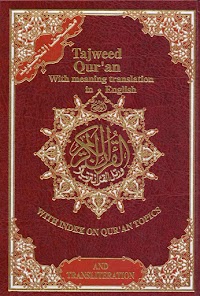Related Posts
- Genesis And Evolution Of Shi’a And Shia’ism23 Feb 20170
Allama Ehsan Elahi Zaheer Language: English | Format: PDF | Pages: 210 | Size: 2 MB Before I touch on the topic, I would like to unveil the fa...Read more »
- Dajjal: The Judeo-Christian ‘Civilization’!18 Feb 20170
Mohammad Bayazeed Khan Panni Language: English | Format: PDF | Pages: 150 | Size: 1 MB Over the last thousand and four hundred years, the com...Read more »
- A Calm Dialogue Between Sunnah And Shia18 Feb 20170
Abdur-Rahman Demashqeyyah Language: English | Format: PDF | Pages: 132 | Size: 1 MB In this book, Dr. Abdur-Rahman Dimashqeyyah shows and disc...Read more »
- The Search For The Truth18 Feb 20170
Dr. Saleh as-Saleh Language: English | Format: PDF | Pages: 33 | Size: 1.5 MB The Search For The Truth: Today, many people are curious about I...Read more »
- A Gift To The Barailwis18 Feb 20170
Ali Hassan Khan Language: English | Format: PDF | Pages: 68 | Size: 1 MB All thanks to Allah, Lord of the Universe, and may His salah and sala...Read more »
- Awqaf Magazine ( No.35)19 Mar 20190
مؤلف الكتاب: kuwait awqaf public foundation الناشر: Kuwait Awqaf Public Foundation سنة النشر: 2018 عدد صفحات الكتاب: 28 عدد زيارات الك...Read more »
- كتاب: Tajweed Quran with Meanings Translation and Transliteration in English=مصحف التجويد مع ترجمة المعاني إلى الإنجليزية (ملون)16 Jun 20183
عنوان الكتاب: Tajweed Quran with Meanings Translation and Transliteration in English=مصحف التجويد مع ترجمة المعاني إلى الإنجليزية (ملون)...Read more »
- كتاب: Taiweed Quran Miraculous Dual Verses on the Quranic Pages=مصحف التجويد مثاني إعجازية في الصفحات القرآنية (ملون)16 Jun 20182
عنوان الكتاب: Taiweed Quran Miraculous Dual Verses on the Quranic Pages=مصحف التجويد مثاني إعجازية في الصفحات القرآنية (ملون) المؤلف...Read more »












Post a Comment
EmoticonClick to see the code!
To insert emoticon you must added at least one space before the code.